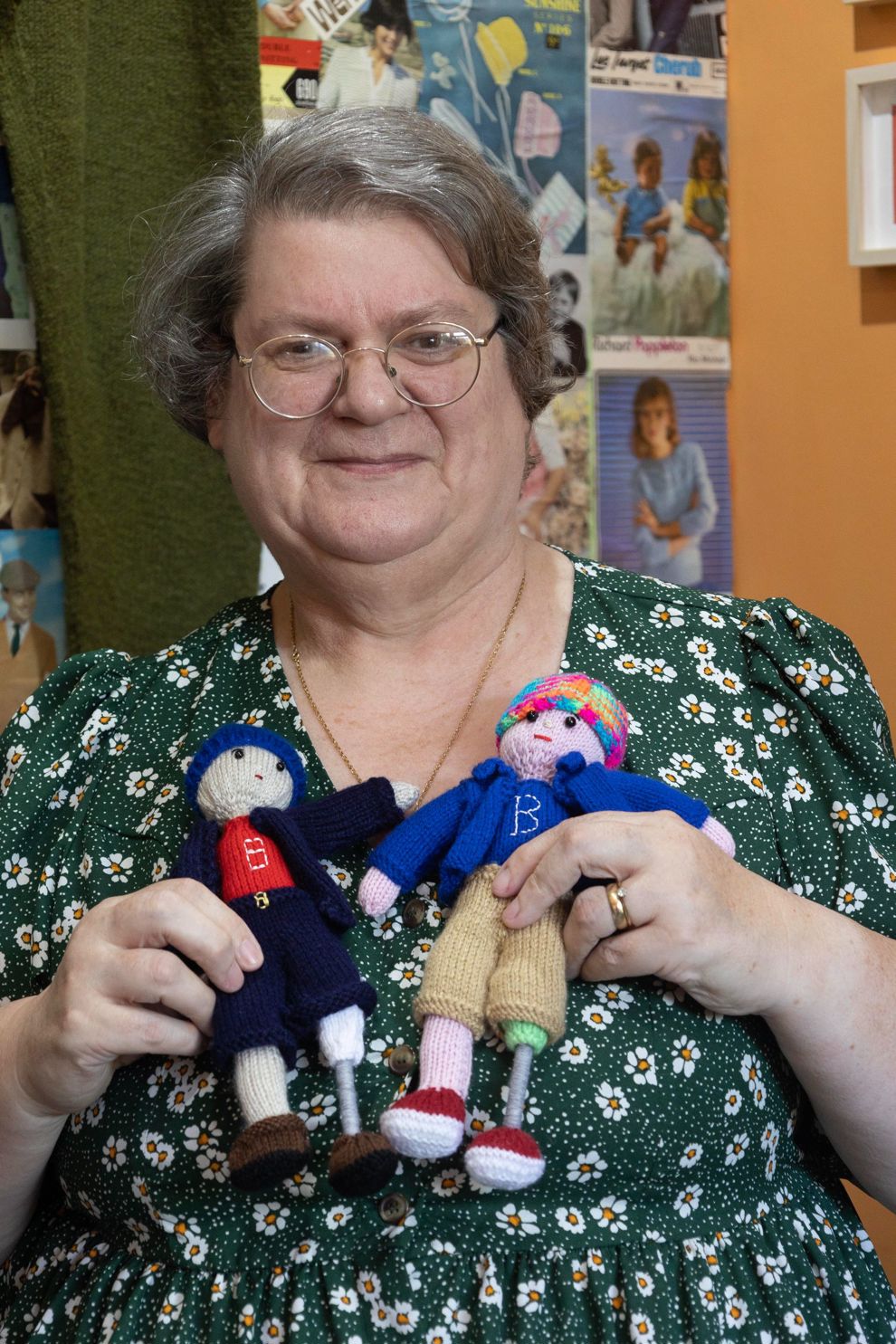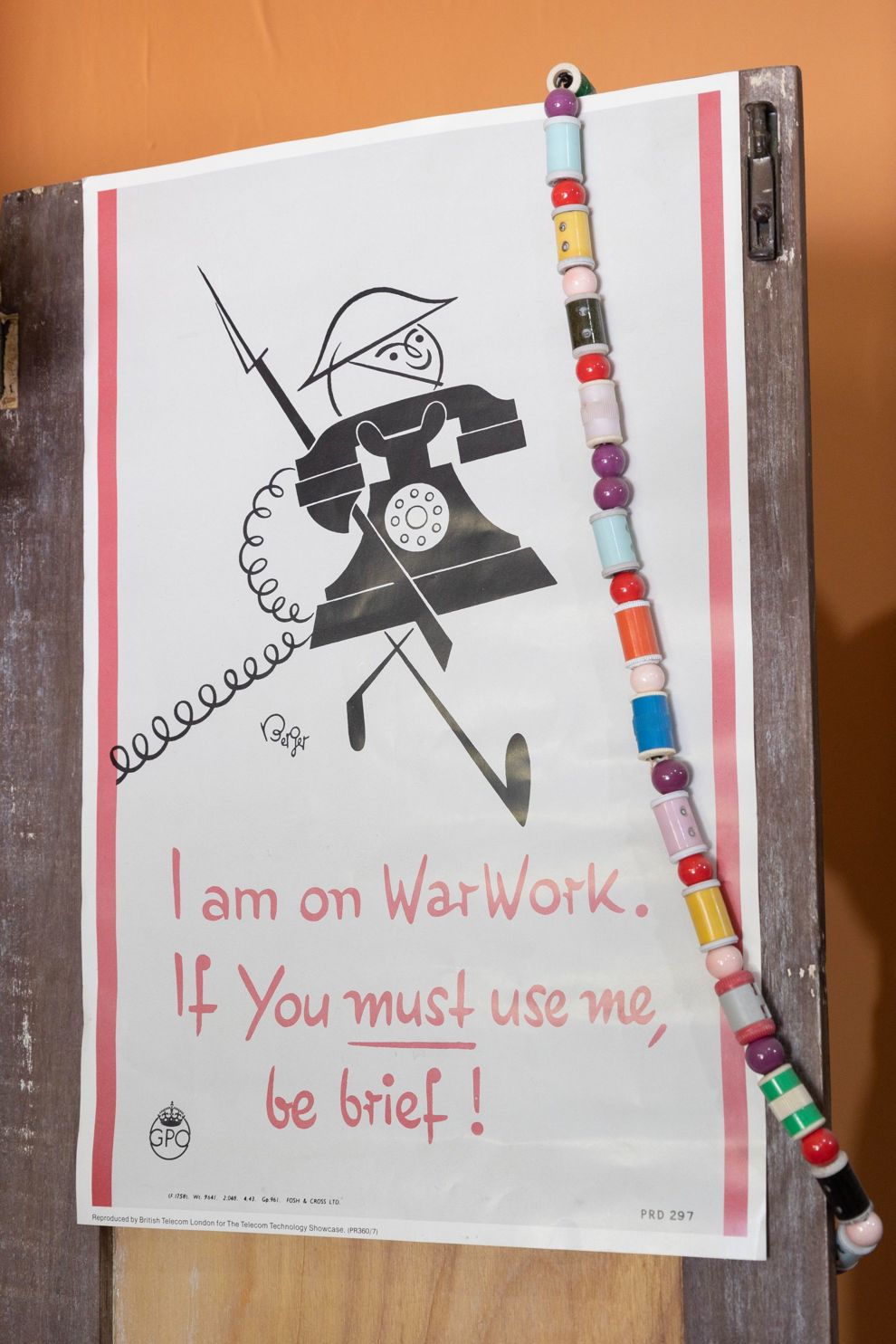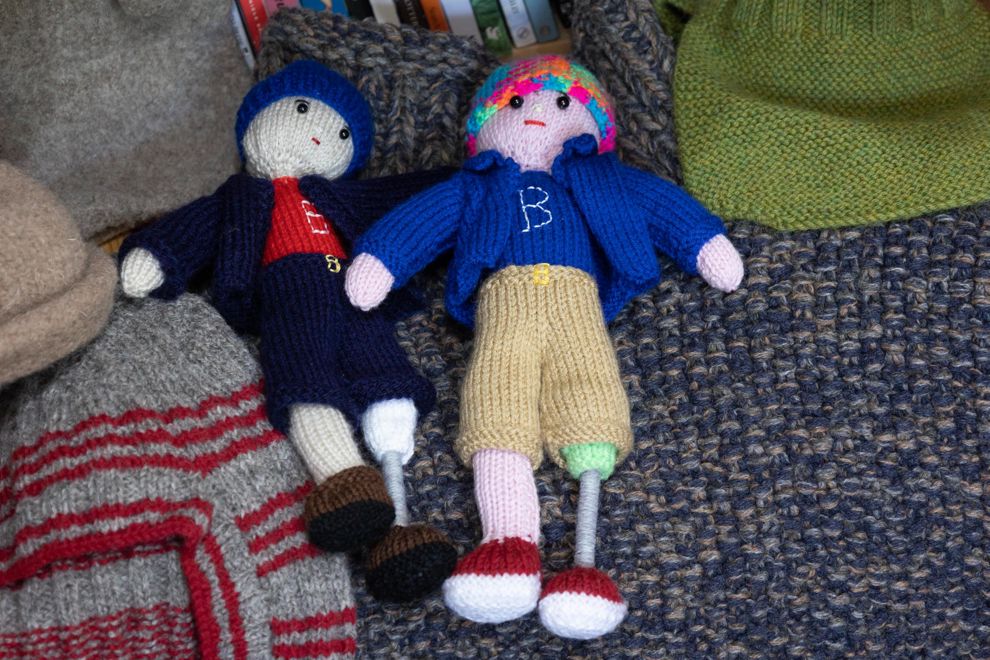Joyce Meader’s work features in a series of blockbuster films, but you won’t find her name on any of the credits. The Honorary Blesma Member is one of the UK’s foremost historical experts on military knitwear, and is in serious demand when film producers need garments that are historically accurate, often working around the clock with a group of local knitters to hit deadlines. Joyce has already played a significant behind-the-scenes role making period-perfect knitwear for the movies Warhorse, 1917 and The Wildest Dream, which stars Ralph Fiennes as pioneering climber George Mallory.
“It’s still a real thrill to see one of my pieces of knitwear being worn on screen in a movie,” says Joyce, who is a member of Blesma’s Southampton Branch. “It’s good to know that I have created something that is perfect for that particular period, and that it adds authenticity to a film.” Keen-eyed movie goers will have seen actor George MacKay, who plays Lance Corporal William Schofield in the WWI epic 1917, wearing a muffler that was knitted by Joyce in scenes throughout the film. Glimpses of other cast members in fingerless gloves, stump socks, yet more mufflers, and balaclavas are peppered throughout the Oscar-winning production.
Joyce’s skills in reproducing copies of time-specific knitted garments have been honed by a vast collection of original patterns that stretches back to the Crimean War, and her home has a ‘knitting room’ full of yarn and hundreds of pattern books that offer a fascinating window into military and social history as well as fashion.
WWI AND THE RISE OF KNITTING
“I first got interested in military knitwear after selling some webbing to a re-enactment enthusiast who said that he also needed some socks. I’ve always knitted for as long as I can remember, so I helped him out and got really engaged with it,” says Joyce, a former nurse from Chandler’s Ford in Hampshire.
“A friend suggested contacting the Hampshire Museum’s wardrobe department in Winchester, but it only had patterns from the Crimean War period. I then went to the National Army Museum, which was very helpful, and from there I’ve just built up my collection and knowledge. I guess people working in films were directed to me when they wanted help with knitwear as it is not something you can just produce without knowing the various styles, types of wool and techniques that were around at the time.”


World War I saw a massive rise in home knitting; troops on the front line were desperately short of equipment and clothing as they weathered terrible winters while the war dragged on. Knitting clubs were set up in many towns and villages, while people also knitted on buses, in queues and even in between courses at restaurants to meet demand for woollen gifts that would provide warmth and boost morale.
“I’ve got a posse of about 14 knitters locally and we all enjoy it when we get a film commission. The orders usually come in with just a few weeks’ notice so I couldn’t possibly do it all on my own,” adds Joyce, whose husband Clive served in the Royal Corps of Transport and Catering Corps TA.
“For 1917, we were still pressing the last jumper as I was due to post it. I don’t let anything leave my house unless it’s perfect, which is ironic as for that film everything was immediately dragged through the mud for extra authenticity!
It’s a real thrill to see one of my pieces being worn in a movie and to know that i have added authenticity to a film.
“We all went to see that film together when it came out and loved it, as well as having that special bit of pride every time we saw something we had knitted!”
KNITTING FOR HOLLYWOOD
Joyce also worked on The Wildest Dream, which portrays George Mallory’s ill-fated 1924 attempt to become the first person to climb Mount Everest. He was reputedly dressed in a tweed jacket and hobnail boots when he was last seen alive 800 metres from the summit. But Mallory, whose frozen body was only discovered in 1999, was actually at the forefront of outdoor wear technology.
“You see photographs of him at Base Camp wearing his tweed jacket, which is where the myth comes from, but he actually wore a lot of clothing that was very cleverly designed,” says Joyce. “He wore three pairs of woollen socks, which we reproduced for the film, two pairs of long johns, three shirts, a jumper and a jacket that was quite advanced for its time as it was made from tightly-woven material that didn’t let the cold in. Meanwhile, his climbing partner Sandy Irvine, was the first to have zips on his climbing clothes.”
SUPPORTING Ukrainian soldiers
Joyce was introduced to Blesma after volunteering as a home visitor for SSAFA after her 30-year nursing career. She regularly volunteers at Blesma events and attends Branch meetings, gatherings and lunches. She also gives talks and lectures on historical military knitwear and is currently knitting socks for Ukrainian soldiers fighting against Russian troops.
“Their conditions are appalling, and they run the risk of developing trench foot because their feet get wet and they cannot leave their positions,” says Joyce, who has two grown-up children. “This is an issue that we normally associate with WWI, but it is a huge danger today in Ukraine. It is not much, but it does make a difference for them, and I am always happy to help men and women serving on the front line.”

We can help
We are dedicated to assisting serving and ex-Service men and women who have suffered life-changing limb loss or the use of a limb, an eye or sight. We support these men and women in their communities throughout the UK. Click the link below to find out the different kinds of support we offer.
Get Support
Leave a comment
Join fellow Members and supporters to exchange information, advice and tips. Before commenting please read our terms of use for commenting on articles.